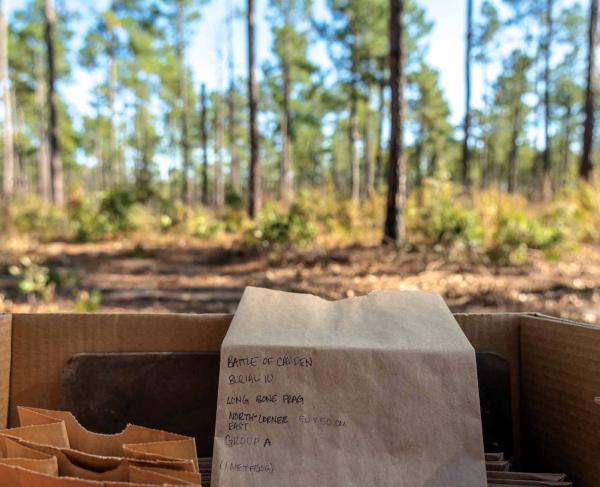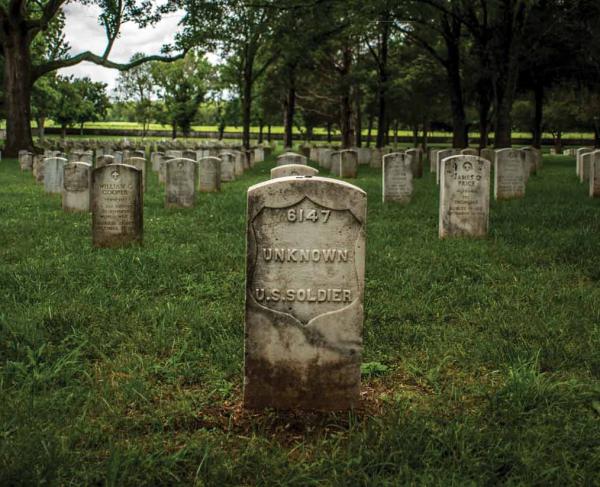
Lorraine American Cemetery, St Avold, France
Warrick Page/American Battle Monument Commission
Grave marker inscriptions and iconography for our fallen heroes must meet specific guidelines, but they reveal the distinct individual stories of the soldiers buried beneath the sacred soil. Read on to learn more about the distinctive markers of the Veterans Administration and the American Battle Monuments Commission.
Veterans Administration Markers

- Before the Civil War, fallen American soldiers were buried beneath a round-top wooden board that would bear a registration number or small inscription. In 1873, Secretary of War William W. Belknap adopted the first standardized design for stones made of long-lasting marble or another durable stone to be erected in national cemeteries.
- Until 1903, unknown burials might receive a six-by-six block rather than a vertical headstone. A more detailed design with a recessed shield motif began to appear in the 1890s, and in the event that a Confederate burial was marked, it would receive a vertical stone with a slightly pointed top rather than a gently rounded one.
- While the secretary of the Army was originally in charge of grave marker allocation, that responsibility was transferred to the Department of Veterans Affairs in 1973. Since then, more than 14 million headstones have been furnished.
- Today, a standard headstone will be made of either Georgia or Vermont marble, weigh about 250 lbs. and measure four inches deep, 13 inches wide and 42 inches tall. The design has remained almost identical since World War II and denotes the dates of birth and death, the highest service rank attained, a religious symbol if desired and any wars in which the deceased participated as an active-duty service member. Other options include a flat marble grave marker, a flat bronze grave marker and small bronze niche markers.
- While the Veterans Administration no longer allows unique headstones upon graves, families can choose from 50 symbols associated with religious beliefs, a tradition that began in 1922. The most recent to be approved was a wiccan symbol in 2007.
American Battle MonumeAnts Commission Markers

- All AMBC headstones are either presented as a Latin Cross or the Star of David. Due to the unprecedented scale of conflict during World Wars I and II, some Jewish soldiers were mistakenly buried under crosses, a situation not unique to the United States. International nonprofit organization Operation Benjamin — inspired by the story of by Pvt. Benjamin Garadetsky — works with cemetery administrators and families to correct this oversight.
- In World War I, servicemembers who could not be identified received a gravestone annotation: “Here Rests in Honored Glory an American Soldier Known but to God.” A similar practice was followed for World War II, but the words “American Soldier” were changed to “Comrade in Arms.”
- Although ABMC facilities are owned by the U.S. government, local residents have strong emotional connections to the sites and those they honor, who fell liberating their communities. At several cemeteries in Belgium, Luxemburg and the Netherlands, the individual graves have been “adopted” by families who serve as caretakers and memory keepers. It is not unusual for the responsibility to be passed down through generations, nor to name a child for the family’s soldier-charge.
- Upon request, ABMC will provide a family with a photograph of their loved one’s resting place, typically after placing flags of both the host nation and the United States at the graveside. To make the inscription legible, staff reverently rub wet sand into the lettering and carefully sponge away the excess. For European ABMC cemeteries, the sand is brought from the D-Day landing beaches in Normandy.
Topic(s):


